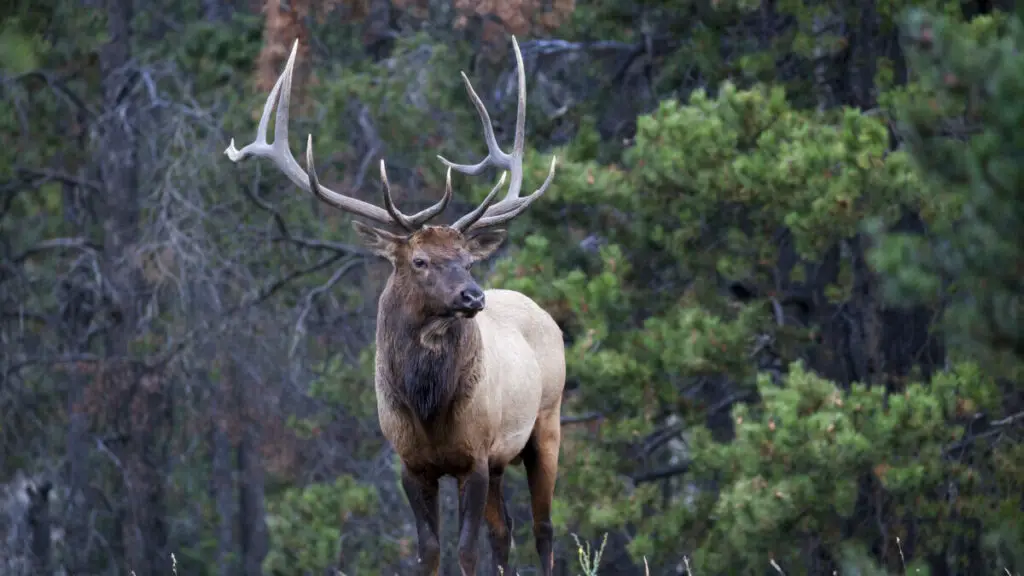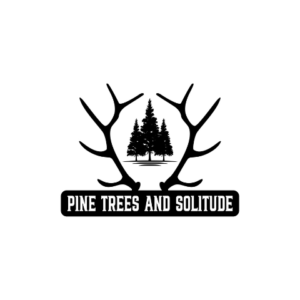
When looking at options for hunting elk, you will see different months available for different tags. They will all fall within the last part of the calendar year, so which one do you pick?
September is by far the most active time to hunt elk. This is due to the elk mating or “rutting.” The bulls are very vocal and are moving around looking for mates. Because they are calling so much, this makes it a prime time to be able to locate and even call in a bull elk.
While a September hunt has its perks, being in the rutting season, there are also other seasons out there for your consideration. Lets a take a look at some pros and cons.
(Pinetrees and solitude may earn a commission from affiliate links in this article.)
September
As stated above, September is an awesome time to elk hunt. There are some big reasons why I say this.
- It is the begging of fall. That means that no other hunters have been out there in the woods spooking the animals out of their natural habitat.
- The rut makes this month the most vocal time of year. Go on youtube, and you will see probably more than half of the elk hunting videos are showing September bowhunts. This is because you can locate the elk, close the distance, and lure the bulls in with calls. You can get extremely close.
- It is bowhunting prime time.
Because of the ability to be able to call in the elk so close, most states handicap the hunter by only making this season available for bowhunting. This ensures there is a fair chase scenario for the elk. There may be some exceptions in some states, but for most, bowhunting is in September.
October
If you would rather hunt elk with a rifle, then perhaps a tag in October would be better. As the rut winds down, most states open the month of October up to “any weapon” seasons. This means the majority of hunters opt for high-powered rifles to hunt elk.
And rightfully so, since it will be a little more difficult to get close to the elk. Unlike in September, you can no longer call the elk in, so hunters need to switch to a spot-and-stalk method of hunting. This leads to longer shots.
A nice thing about hunting in October is that the weather cools down. This keeps you a little less hot and also is better for keeping fresh elk meat cooled down when you get an animal down.
November
If you are lucky, you’re state may offer various late fall opportunities. These seasons are often open with various restrictions on methods of take, so look closely at the regulations in your state of interest. One of the biggest advantages to hunting elk in November is the elk are out in the open and they are in lower altitudes.
Because the elk are going into their wintering grounds, they start migrating from the high timber areas they hide in during the rest of the year and head down to lower foothills and open areas where they can find food easier because of less snow.
You will be able to spot elk from a long way away. That is the pro.
The cons include being able to get access to those elk. The elk may very well be pushed onto private land. You can check with an app like onX, to see whose land they are on and try and contact the owner for permission.
The other con, is that because they are out in the open, you are going to have to get close without being undetected. This can be challenging. So you will have to be creative in your stalking plan.
Make Yourself Eligible
Now that we have talked about the various seasons, I would like to touch on a way to open yourself up to as many opportunities as possible. You can do this by:
- Apply to as many opportunities as possible
- Own as many methods of take (firearms, bows, muzzleloaders) as possible
Because of all the different opportunities and regulations out there, owning the means the be able to hunt these seasons opens you up to be ready when opportunity knocks. I recommend you try and own at least 1 rifle, 1 bow, and 1 muzzleloader.
This way, you can participate in all the opportunities out there.
In many states, you will need to undergo a bowhunter education course, separate from the regular hunter education course. You will learn a lot about bowhunting methods during this course and gain valuable insight into the art. So make sure you take this course before heading out.
In regards to buying a muzzleloader, there are 2 distinct classes out there. Inline (new), and traditional styles. The inline muzzleloaders are newer looking and allow you to put the cap directly behind the powder. They also allow for the barrel to break at the stock so that you can push out a defective charge.
A traditional muzzleloader is the old-style, Davey Crockett-looking guns. They are exactly what they look like.. traditional guns.
I want to make a clear distinction on this because there are some muzzleloader seasons that are specifically just for traditional styles. For this reason, I would recommend you buy a traditional muzzleloader so you can participate in any muzzleloader season out there.
You can always use a traditional in a general muzzleloader season, but not an inline muzzleloader during a traditional. One of the biggest differences aside from the model is the projectile permitted. The traditional seasons only allow you to use a lead ball, while a general season would permit the use of a rifled slug.
Plus, these things are loads of fun to shoot. I harvested a mule deer in my teens with a muzzleloader and it was a blast having to measure out the powder, put the patch down, then slam a ball down the barrel. It really connects you to your western roots.
If you enjoyed this article, check these other great articles from Pinetrees and Solitude:
- What Should I Bring Elk Hunting? Idaho Checklist
- Are Guided Elk Hunts Worth The Cost? Find Out Here
- The Best Time To Hunt Elk: Master Elk Habits
(This article was originally published on Pintreesandsolitude.com. If it is now published on any other site, it was done without permission from the copyright owner.)
